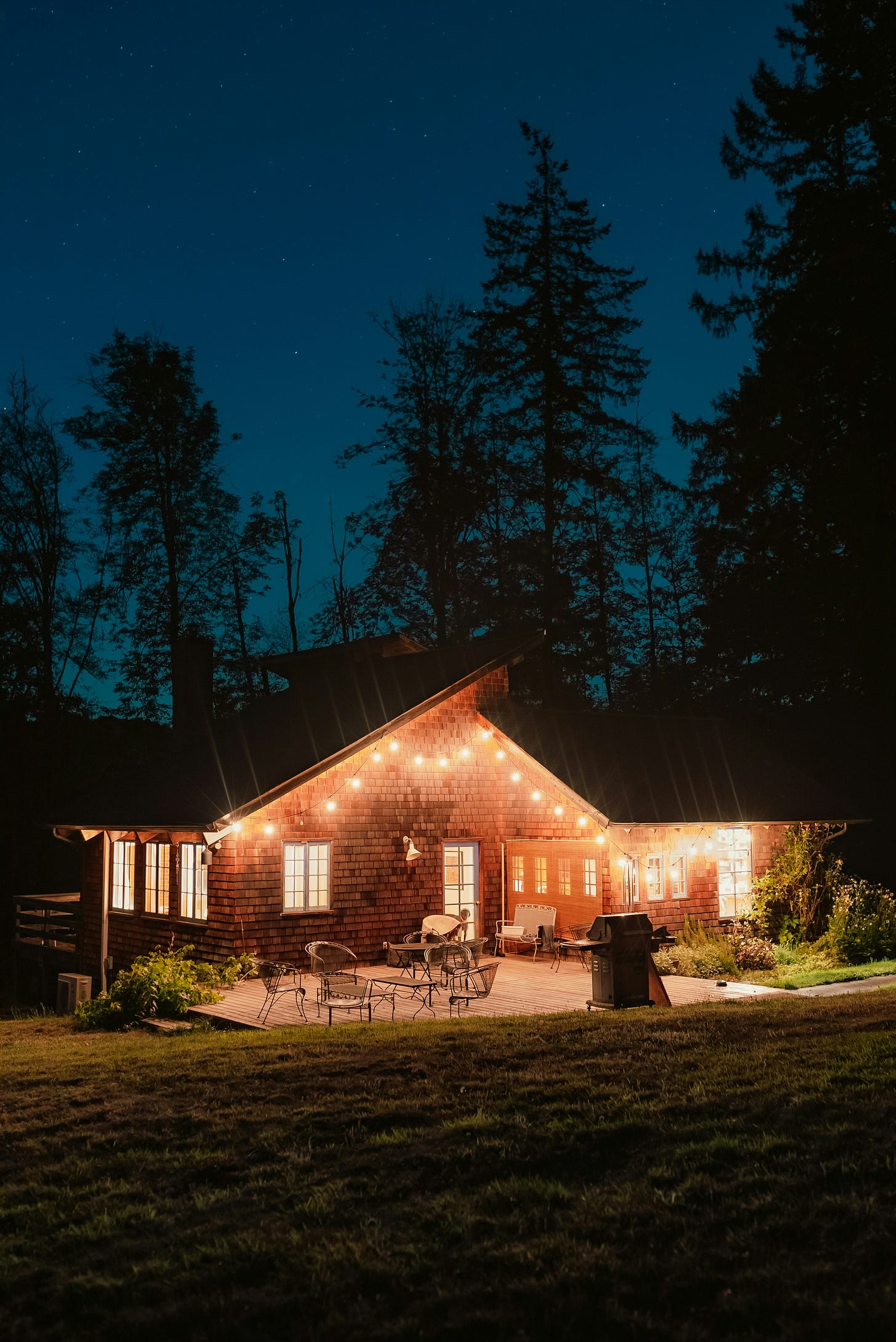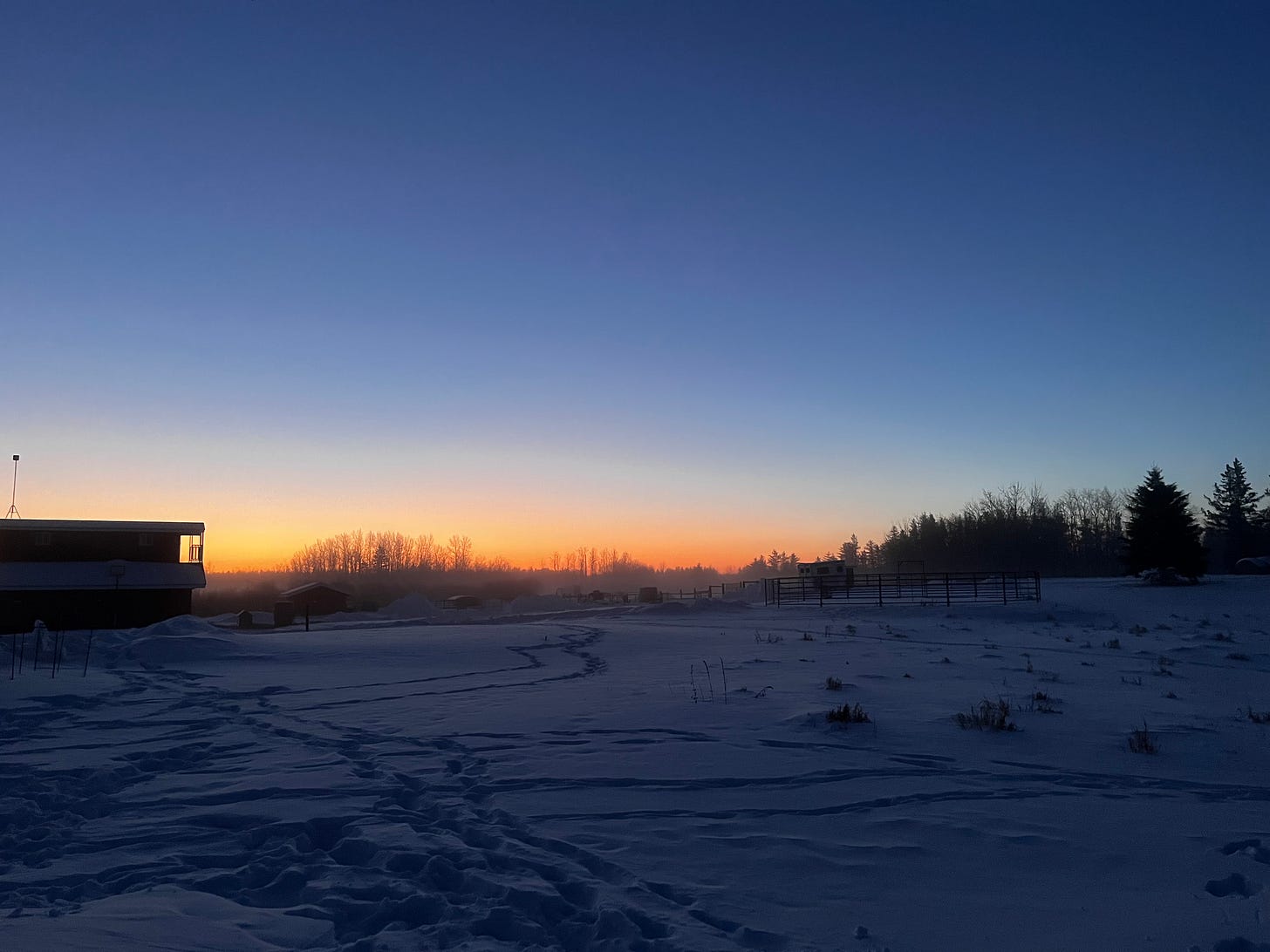Inside and outside (a re-post from near the beginning...)
Opening up a discussion on safety, home, and what is ultimately helpful for humans, horses, and dogs, etc.

I’ve been thinking a lot about the insides and outsides of things. Specifically, myself. And my horses. And my dogs. And my home. There are differences between the inside, and the outside, of anything. And those differences really matter.
For instance, writing this blog post, I could portray my inside (which I would consider to be my true thoughts, authentic feelings, and core motivations), OR my outside (which probably consists more of my persona, brand, “best foot forward,” and general appearance/behaviour). But if I pretend I’m showing you my inside (let’s say, by discussing emotional or “deep” subjects), and it’s really my outside (because I’m editing and definitely working to make myself look good by doing so), I’m continuing the confusing portrayal of false vulnerability I grew up with. I’m lying from the get go.
I may not even realize it, however. I haven’t for most of my life, that’s for sure. Sometimes, portraying one’s feelings or thoughts in a fairly, hmm, “open” manner, is sure to endear oneself with one’s audience. It can be done strategically, while keeping some deeply private thoughts and feelings hidden. It’s possible, but often those hidden thoughts and feelings can then get hidden from myself - which becomes super awkward to say the least. Actually, it becomes dissonant, and increasingly painful, and sometimes my body starts to protest the repression, etc. à la The Body Keeps the Score, by Bessel Van der Kolk. (Just to be clear - I’m planning to show you my outside, but I’m also occasionally going to let you in to a safely partitioned, work area of my inside, as well. I’m just being diligent in knowing which is which, so that you know you aren’t invading…or being low level lied to…tricky, right?). Basically, vulnerability for me is a very fraught subject. It’s mostly been something I’ve used to self-harm.
Inside and outside is also a concept affecting my feelings about home. Home, in the romantic and highly idealistic sense, is the epitome of where one is safe. “Home free!” was a phrase I grew up singing in the context of Tag, Kick the Can and Hide and Seek games. It meant I was home, safe from the person chasing me. The rules always demanded we start the game by designating where home free was. This rule and resulting consensus was pivotal to the game. Without a home free place, we could be exhausted or bullied by other children who were faster or bigger (because let’s face it, running games are hard). With a home free, there was always a way to take a break, catch our breath, and maybe even taunt the one who was “it” a little. The invisible boundary around that arbitrary spot had the effect of adding courage - of en-courage-ing us.
So while home usually connotes a place, it is also referring more specifically to a space inside that place. Home is where the heart is - making us think of our core, our source of life itself. We circle away and back again. Quests begin and end at home. Home is the origin, and destination, both. We are always looking for it. We know it when we find it. We don’t ache for the appearance of a home. We need to be home. To be inside a home.
And it would be nice to end this post with that lovely thought! However, and this is why I am starting this particular Substack, we all know that the biggest monsters in life pretty much live in the closets, or even under our beds, deep in our homes, and despite (or maybe even because of) those with whom we live. “Home free” is a child’s phrase, but many (and maybe even most) children do not experience this consistently. Some do not experience it at all.
I’ve spent my entire professional career as an occupational therapist working primarily with families whose children are not developing in the expected ways. I’ve played with, held, positioned, observed, interacted with, communicated with (alongside my very good speech-language pathologist colleagues), and hurt along with many, many, many children. These children did not ask to be born with “differences,” “challenges,” “weaknesses,” “disabilities,” “chronic/lifelong conditions,” etc, etc. Their parents did nothing wrong. Or, in the case of some children with traumatic brain injuries or other consequences of violence in the home, the parents were clearly overwhelmed and dealing with way too much to be able to keep such small and needy humans safe (I must reserve my judgement, having been through some times of overwhelm myself. Resources matter and when resources are too scarce, the most needy are the first hit, with often irreversible damages.).
Home, for these families, is hard. It’s hard to care for a child who cries when touched, who can’t keep any normal food down, who seems to become angry at or primally afraid of what other children find enjoyable or soothing. It’s hard to watch one’s child suffer pain, sometimes relentlessly. To watch as a young human is constantly thwarted in movement, use of eyes or ears, or is unable to organize fingers or legs to walk or play, or maybe is even unable to respond to any stimulation in any recognizable way. It is hard, and it creates the opportunity for blame, shame, isolation, defensiveness, desperation, or apathy. None of these responses are unexpected. What is more unexpected is when families continue to persevere and advocate, fight, try, try again, try something different, argue with the nay-sayers, sacrifice, sacrifice more, and then get up, and do it all again.
It’s hard, too, and maybe this is even harder, when the parents want to advocate, fight, argue, try, and persevere, but just can’t. I’ve also worked in places and been invited into homes where the decisions made daily and hourly by the adults are clearly impossible ones, at least from where I stand. The lack of clean water, power, enough space, food, shelter from the elements…this does not make for a situation that allows for obvious heroism as we (in more comfortable circumstances) tend to frame it. The heroism here is simply getting up each day and surviving. Each child growing up in a situation where the adults are not resourced enough is at risk. Children who have the odds stacked even further against them, perhaps with a mobility or sensory impairment, have very little chance to reach any kind of potential. When there is a significant neurodevelopmental, social or mental illness present in any family member, the chance for dangerous violent interactions skyrockets. It’s easy to blame people after the fact, or from a safe remove, but I don’t believe any of us are inherently able to do the impossible. Certainly not day after day, or generation after generation. Home, in these instances, is simply not home. The outside is not keeping out the threats, and the inside degenerates proportionately, for all concerned.
Home can be a battlefield. It can be a place of monsters. But it can also harbour such deep love! Even when the love seems to go nowhere, or accomplish nothing, or be insufficient to the task, just the presence of that love is remarkable. I’ve been privileged to observe amazing outpourings of love to children, and older children, and then young adults, and then adults, with such great needs that the generosity of the people loving could be termed, literally, heroic, without hyperbole. I know that the human capacity to create suffering is large. But I know for sure that the human capacity to create a truly amazing attempt at “home free” for those loved, is also large.
The planet we live on is both stunningly beautiful and also deadly hostile. This last month in Saskatchewan was terrifically cold. I know, because I was feeding horses and caring for dogs every morning. The outside of my home was not comfortable! The inside of my home was warm and safe and cozy (we have wood heat, and it is awesome). However, I needed to make sure that the animals also were able to be warm and safe and cozy in their own ways (lots and lots of hay!). The weather was no one’s “fault,” and it is not unexpected where we live. However it certainly did make for a very clear delineation between outside and inside. Threats to life itself exist simply in the weather, let alone from viruses, congenital birth defects, and cancer. Home is not a theoretical warm fuzzy concept alone. It requires a very robust outside to maintain the inside we all want.
The point is: love is not just the warm fire in the living room, or the soup on the kitchen table. It is also the insulation, the fences, and the well-maintained roof. It is the server and the firewall, both. It is what allows us to venture out, and to come back in and warm up. The outside holds and protects the inside. The inside is its own world of possibility and danger, but can at least function independently of outside threats, with this simple, but very practical, delineation.
Working on my inside without working on my outside is not wise (not in winter! Not here!). Working on my outside without attending to my inside: equally short-sighted. The two forms of work look different, for sure. It can be confusing to myself and others if I don’t identify the common aim uniting both activities. But home-building and home-defending and home-developing are possibly the most important tasks I can devote myself to, if I want to, safely and sustainably, access the wider world. Home allows the story, my story, to begin. And this work, this self-love, this practical investment into a physical and spiritual and even mental reality, I believe pays off in creating a human who can afford to be hospitable, generous, creative, and yet secure. That’s my gamble, anyway. That’s what I want to try out.
I believe in home. I need one. I also need to work hard to create space for myself in my own home, and make sure I don’t casually let others in too far, or put what should be my safest place out there for public discussion or trampling. At the same time, I do want to organize my thoughts, and figure out categories, and maybe even list some hacks I’ve found, and generally talk more about this topic, in just enough of a removed sense that it’s not only safe for me, but for you, too. Home is so important, so difficult, so universal, and so inaccessible to so many people (and horses, and dogs, etc. - more on that, later) that I think the discussion is worthwhile.
It seems to me that the concept of inside and outside can help with this whole kettle of fish. This discussion has so many corners and rooms and directions I want to explore, but for now, I’d like to start with the idea of me, categorizing explicitly and openly, what is my outside, and also what is my inside. Maybe that will help me to place the boundaries in a way that is honest, sensible, sustainable, and still allows for connection between my outside and your outside. Knowing that we both hold our insides close, as we should. Knowing that home is the one and only place where our hearts have a chance to grow into the strong, but tender, source of who we are, and who we could become.




